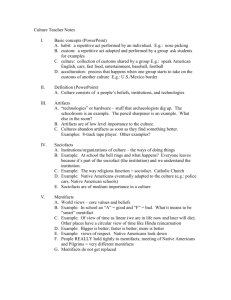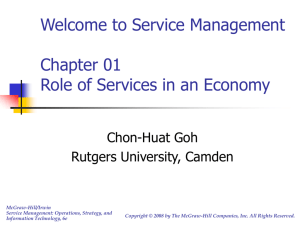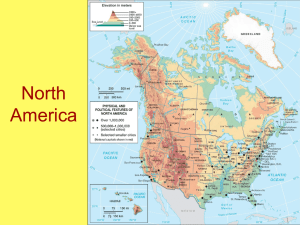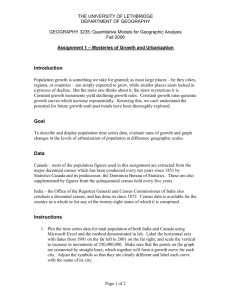FINAL EXAM REVIEW - The University of Texas at Austin
advertisement
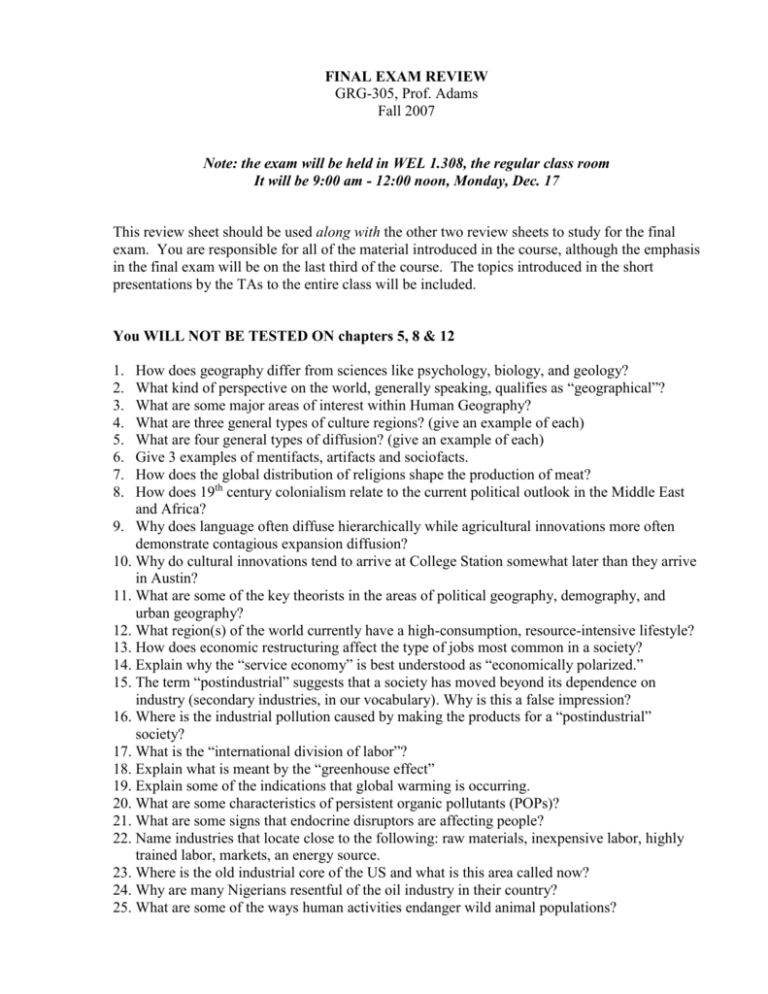
FINAL EXAM REVIEW GRG-305, Prof. Adams Fall 2007 Note: the exam will be held in WEL 1.308, the regular class room It will be 9:00 am - 12:00 noon, Monday, Dec. 17 This review sheet should be used along with the other two review sheets to study for the final exam. You are responsible for all of the material introduced in the course, although the emphasis in the final exam will be on the last third of the course. The topics introduced in the short presentations by the TAs to the entire class will be included. You WILL NOT BE TESTED ON chapters 5, 8 & 12 1. 2. 3. 4. 5. 6. 7. 8. How does geography differ from sciences like psychology, biology, and geology? What kind of perspective on the world, generally speaking, qualifies as “geographical”? What are some major areas of interest within Human Geography? What are three general types of culture regions? (give an example of each) What are four general types of diffusion? (give an example of each) Give 3 examples of mentifacts, artifacts and sociofacts. How does the global distribution of religions shape the production of meat? How does 19th century colonialism relate to the current political outlook in the Middle East and Africa? 9. Why does language often diffuse hierarchically while agricultural innovations more often demonstrate contagious expansion diffusion? 10. Why do cultural innovations tend to arrive at College Station somewhat later than they arrive in Austin? 11. What are some of the key theorists in the areas of political geography, demography, and urban geography? 12. What region(s) of the world currently have a high-consumption, resource-intensive lifestyle? 13. How does economic restructuring affect the type of jobs most common in a society? 14. Explain why the “service economy” is best understood as “economically polarized.” 15. The term “postindustrial” suggests that a society has moved beyond its dependence on industry (secondary industries, in our vocabulary). Why is this a false impression? 16. Where is the industrial pollution caused by making the products for a “postindustrial” society? 17. What is the “international division of labor”? 18. Explain what is meant by the “greenhouse effect” 19. Explain some of the indications that global warming is occurring. 20. What are some characteristics of persistent organic pollutants (POPs)? 21. What are some signs that endocrine disruptors are affecting people? 22. Name industries that locate close to the following: raw materials, inexpensive labor, highly trained labor, markets, an energy source. 23. Where is the old industrial core of the US and what is this area called now? 24. Why are many Nigerians resentful of the oil industry in their country? 25. What are some of the ways human activities endanger wild animal populations? 26. What is the connection between global warming and decreased human fertility? (hint: neither causes the other but both arise from a certain set of sociofacts and mentifacts) 27. Give a full account (in general terms) of the range of current environmental problems introduced in Chapter 9. 28. What is wrong with the map of “environmental sustainability” on pp.316-317? 29. What causes the thinning of the ozone layer in the stratosphere and what are the consequences of this thinning? 30. What causes acid rain and what regions of North America are most affected by this problem? 31. Why is it harder than it once was to understand the environmental and social impacts of our actions? 32. If a metropolitan area can be considered to be a culture region, it would be (primarily) what kind of culture region? Would other types apply? Why or why not? 33. List the earliest urban hearths and their locations. 34. What is the link between urban life and the idea of civilization? 35. Describe some characteristics of the earliest cities. 36. What is urbanization? 37. Did early cities have a ritual/religious function? Give an example and explain. 38. How might the emergence of cities have been stimulated by the need for irrigation in certain environments? 39. How is the goal of self-defense reflected in the structure of early cities? 40. Explain the role of transportation infrastructure (rivers, canals, railroads, roads, airports, etc.) in determining where cities will emerge and grow, giving examples from different periods of U.S. history. 41. Why would a peninsula be an advantageous site for a city in 2000 BC? 42. Why would a peninsula be an advantageous site for a city in 1800 AD? 43. Why was New York city’s situation advantageous during the colonial era? 44. Why did a major city emerge at the southwest extremity of Lake Michigan? 45. How did time-space compression affect the growth of that city? 46. Explain three models of urban morphology: zone, sector, and multi-nucleated 47. What causes sectors to form? 48. What causes zones to form? 49. What causes “leapfrog” development beyond the edge of previous urban development? 50. Explain how American cities induce people to use the automobile 51. What is the connection between urban growth and economic restructuring? 52. In what ways is the US the dominant country in the world at this point in history? 53. If the average American were to directly pay someone in China or Central America for a month of labor, how long would the American have to work to earn enough money to do this? 54. How are labor conditions different in the places where our clothing is made? NEW MAP KNOWLEDGE: 1. the equator, the Tropic of Cancer, the Tropic of Capricorn 2. difference between latitude lines (parallels) and longitude lines (meridians) 3. culture hearths of urbanization (p.338) 4. location of the traditional manufacturing region of the United States (p.302) 5. Atlas (new maps to know, by map number not page) 47, 50- 54, 59-61 NEW VOCABULARY from A to Z: 1. acid rain 2. agricultural surplus 3. amenities 4. anti-urban ideologies 5. back office 6. CBD 7. centrifugal forces 8. ceremonial center (city as-) 9. concentric zone model 10. deforestation 11. economic restructuring 12. ecotourism 13. endocrine disruptors 14. environmental scientist 15. exurban development 16. Federal Highways Act 17. FHA 18. gated community 19. gentrification 20. GIS 21. global warming 22. globalization 23. greenfield 24. groundwater 25. habitat loss 26. hydraulic civilization 27. model 28. independent invention 29. industrial agglomeration 30. industrial location factors 31. industrial revolution 32. Levitt 33. multiple nuclei model (of city) 34. nonrenewable resources 35. ozone depletion 36. POPs 37. postindustrial economy 38. postwar housing 39. primary industries 40. quaternary industries 41. quinary industries 42. radioactive pollution 43. remote sensing 44. renewable resources 45. resource depletion 46. secondary industries 47. sector model (of city) 48. soil erosion 49. sprawl 50. sustainability 51. tertiary industries 52. urban decentralization 53. urban ethnic enclaves 54. urban hearth areas 55. urban morphology 56. urban site 57. urban situation 58. urban system 59. urbanization 60. white flight 61. wind power 62. zonal model

